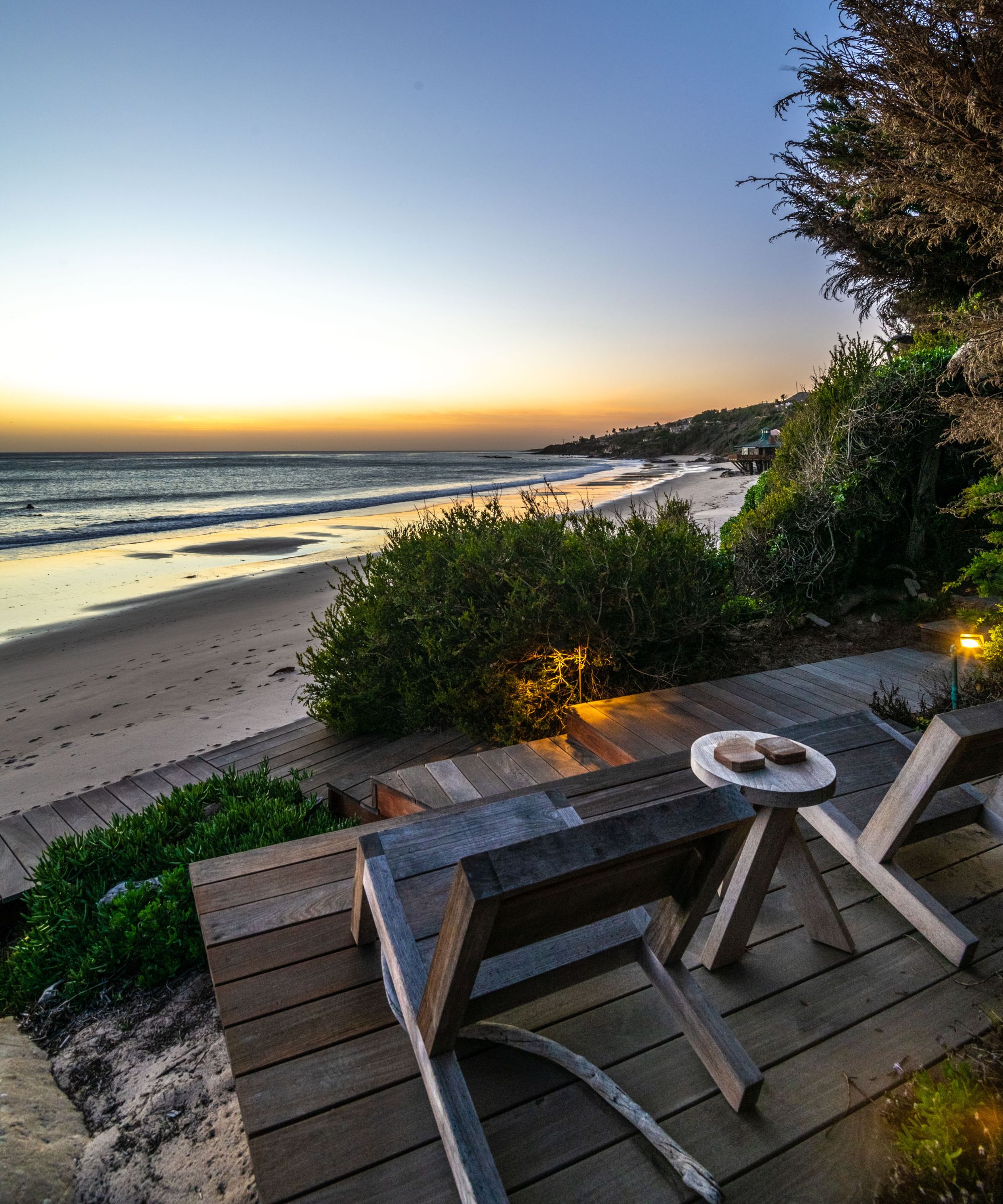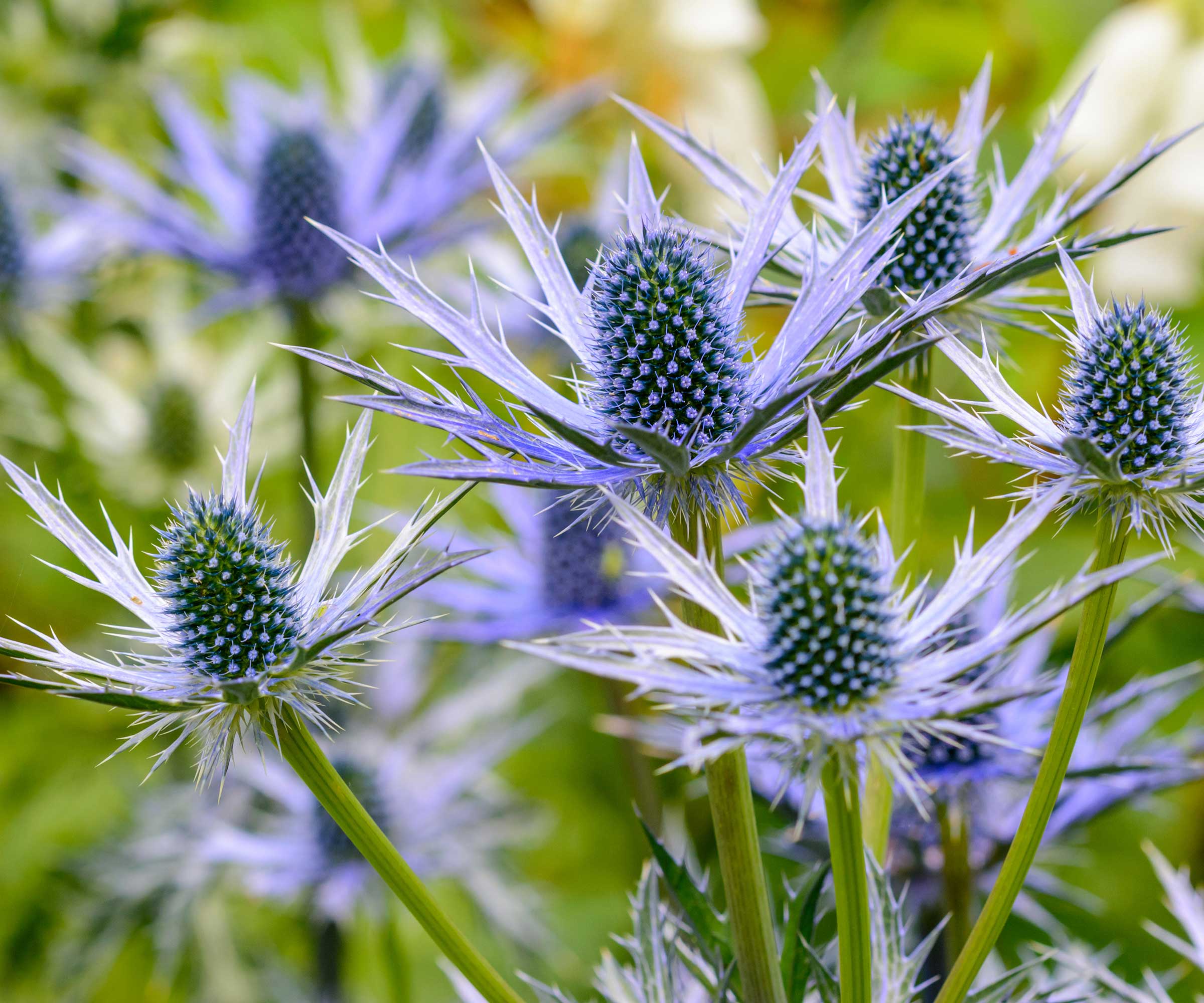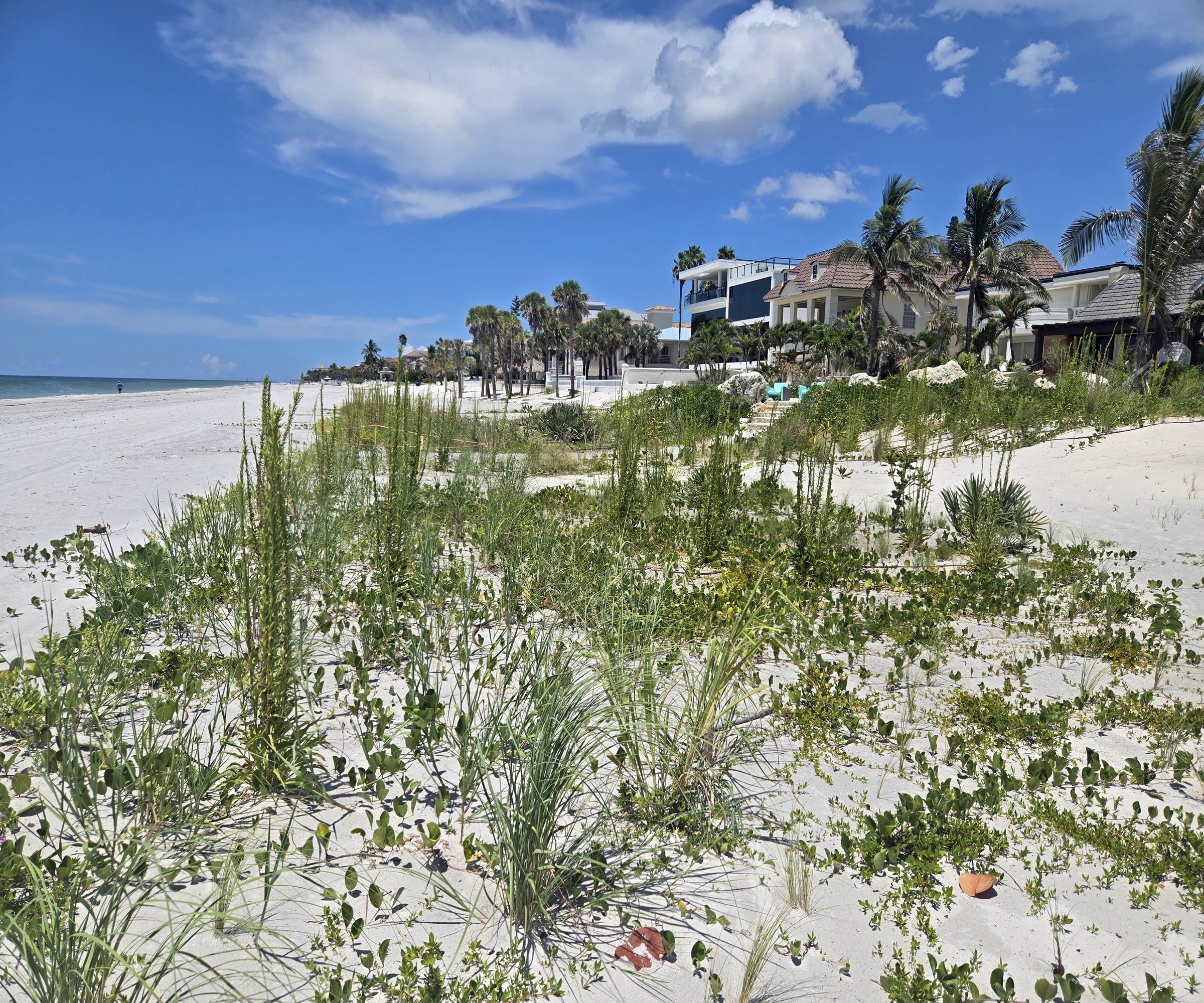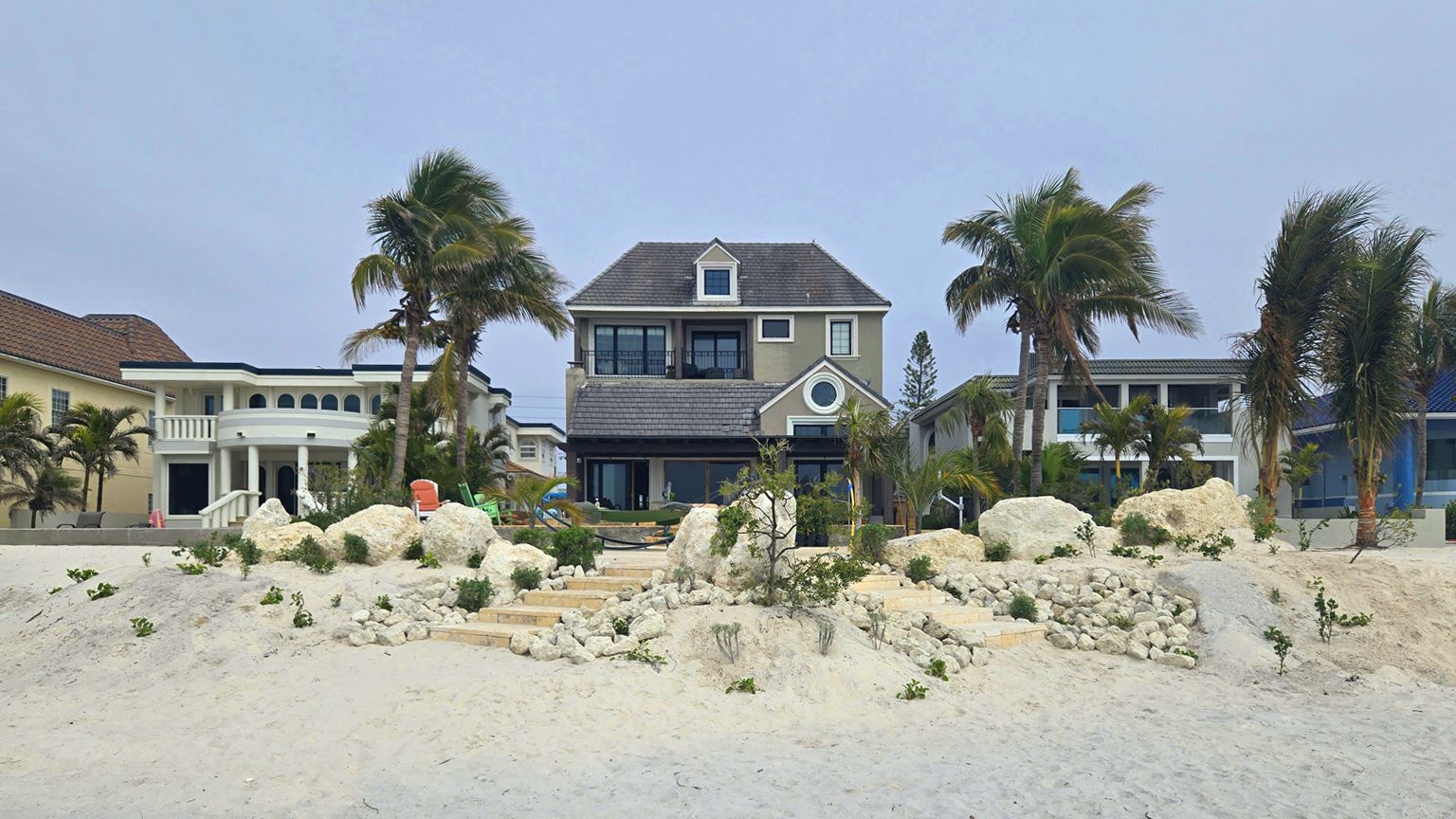Many of us dream of living by the sea, but with climate change and rising ocean temperatures, storms and hurricanes seem to be becoming more frequent and violent. What does this mean for gardeners who live on the coast?
Homeowners with coastal gardens are starting to pay more attention to the resilience of the coastal landscape and making their gardens not only beautiful, but also capable of withstanding the worst that the weather can throw at them.
What is Coastal Resilience Landscaping?

(Image credit: Adrian Anz, courtesy of Coldwell Banker via toptenrealestateals.com)
The beach or sea often brings back fond memories of past vacations or is a beautiful place to escape or relax, but can also be a harsh environment and a place of destruction. This is why gardeners are turning to coastal resilience landscaping.
In short, it is the practice of designing and creating gardens and outdoor spaces that can withstand the stresses that come with proximity to the sea, such as salt or hurricane winds.
Coastal resilience landscaping works with the environment rather than against it, and often takes its cue from nature-based solutions, such as: B. using hardy native plants and incorporating natural features such as dunes alongside permeable landscaping materials.
When asked what coastal resilience landscaping is and why it is becoming increasingly important, James Grew, owner of Seacoast Gardener based in North Hampton, New Hampshire, replied, “For us, coastal resilience landscaping is about creating gardens that can recover from – not just withstand – salt spray, storm surges and severe coastal weather.”
“We serve many oceanfront properties along the New Hampshire coast and southern Maine, and last winter we saw firsthand how extreme storms change the landscape.” A nor'easter filled several of our customers' front yards with seawater, literally tons of sea sand and thousands of beach stones. “It was a clear reminder that coastal gardens need to be designed with adaptability in mind.”

James is the founder and owner of The Seacoast Gardener, a landscaping company based in North Hampton, New Hampshire. With extensive experience in horticulture, James and his team place great emphasis on soil health, plant care and long-term sustainability when designing and managing the gardens.
Coastal Resilience Landscaping Planting

(Image credit: Geoff Smith / Alamy Stock Photo)
The oft-quoted phrase “right plant, right place” was popularized in the 1960s by renowned English gardener Beth Chatto and highlights the importance of considering a plant's ideal growing conditions when deciding what to plant and where.
This is particularly true in coastal locations where plants must be robust and able to withstand extreme salt spray, strong storms, poor or non-existent soil and often sloping surfaces.
Additionally, local climatic conditions will have an impact on plant selection, as the USDA Zone 10-11 hardiness ratings of Captiva and Sanibel, Florida are a world away from the Zone 6 coast of New Hampshire.
However, robust plants such as ornamental grasses and hollies (Eryngia), such as Blue Glitter Sea Holly, available from Nature Hills, are commonly used due to their wind and salt tolerance.
Florida-based Kiamesha Wray, founder and owner of Living Spaces Gardening and Living Restorations, says, “Choosing a busy shoreline instead of a seawall or planting trees in clusters are some powerful decisions you can make that will have a positive impact on how a site performs during a severe weather event.” And that “many of the species we use are adapted to this because they already thrive in environments where hurricanes occur, sometimes every year.”
This is because “living shorelines can better stabilize erosion and absorb storm surges, and trees planted with other trees can support each other in high winds.”
On the North Atlantic coast, James recommends using salt-tolerant native plants and deep-rooted grasses that hold the soil in place and recover after flooding. Plants such as beach plum (Prunus maritima), inkberry holly (Ilex glabra), switchgrass (Turned into panic) and small bluestem (Schizachyrium scoparium) perform particularly well.
“We also use shrubs such as rugosa rose and laurel for wind and salt protection, and sweet pepper bush or red osier dogwood for wetter areas that occasionally experience flooding.”
As recommended by James and commonly used in other garden design styles, including prairie minimalism and drought-tolerant schemes, Little Bluestem is a hardy perennial grass that remains compact with a final height of 2-3 feet. Hardy and adaptable, it can cope with zone 3 and above and very poor soils. You can buy Little Bluestem Grass from Nature Hills.

Kiamesha Wray is the founder and owner of Living Spaces Gardening, a Florida-based garden design and landscaping company. She is passionate about natural landscaping, which utilizes native plants to create resilient ecosystems that support the local environment.
Hardscaping materials for coastal resilience landscaping

(Photo credit: Annette Lepple/Alamy Stock Photo)
Hardscaping materials are the inanimate elements that serve a function in your garden or yard, such as: B. Decking, paving, stones and gravel, while contributing to the overall design. In the face of climate change, homeowners are increasingly turning to sustainable landscaping materials whenever possible. However, when it comes to resilient coastal landscaping and luxury designs, what and where to use is especially important.
Weather-resistant and salt-tolerant materials and those not prone to rot are an obvious choice, but permeability (materials that allow water to pass through rather than retain it) is another key factor, as this can help prevent runoff and localized flooding.
James explains, “Shellhouse driveways, gravel paths and stone patios allow water to percolate naturally, while rain gardens and natural buffers slow runoff and protect the shoreline.” “The goal is to let the land breathe – absorb, filter and regenerate – rather than fight the water.”
Gravel and permeable pavers with drainage channels are often required even on inland construction projects and are often used where garden drainage is important as they allow water to naturally seep back into the ground.
Large boulders can also be used to demarcate areas and provide natural structure to coastal gardens and help dissipate the force of strong storm surges.
Dune hike

(Image credit: Living Spaces Gardening/Kiamesha Wray)
For properties and backyards adjacent to the beach, dune design and dune restoration are becoming increasingly popular due to their attractive, protective and environmental benefits. “Dune systems not only absorb the energy of storm surges, but are also an important habitat for a variety of creatures,” says Kiamesha.
Because sand and gravel are primarily used instead of soil, plant selection is limited and specimen selection focuses on salt-tolerant coastal dwellers that thrive in free-draining, nutrient-poor, and windy conditions. When it comes to dune restoration, Kiamesha recommends the “trifecta of sea oats, bitter panicum, and sea elderberry, as well as morning glory and railroad vine, which are excellent because of their rapid, sprawling growth patterns.”
She further reports that “studies show Bitter panicum in particular as a leading successional species, promoting faster vegetation regeneration as the established root systems help other species gain a foothold.”
A very salt-tolerant sea oat native to the coast of America is sea oat. Uniola paniculata. This spreads via underground rhizomes, which, along with their deep root systems, help stabilize the sand, prevent erosion, and provide food and habitat for wildlife. The oat-like seed heads grow between 90 and 180 cm high and protrude above the foliage on arched stems.
A climbing plant that thrives on neglect and morning glories (Ipomoea) can cover an area in a surprisingly short amount of time. The white-flowering beach morning glory (Ipomoea ordered) is a trailing evergreen and a natural dune stabilizer, but these climbers are not just limited to coastal areas.
The Mexican winds, or Ipomoea tricolor, Prized for its bright blue trumpet-shaped flowers, it can grow up to 3m tall and will bring life to a trellis or wall in the summer months. Typically grown as an annual in zones 3 and above, it can also be grown as a perennial in zones 10-11. You can buy Heavenly Blue Morning Glory seeds from True Leaf Market.
Coastal gardens often evoke a relaxed holiday feeling. But you don't have to live by the sea to create a tranquil garden that helps you unwind and take time for yourself. These top 10 coastal plants do well away from the coast as long as you can provide them with well-drained soil and a sunny location.
